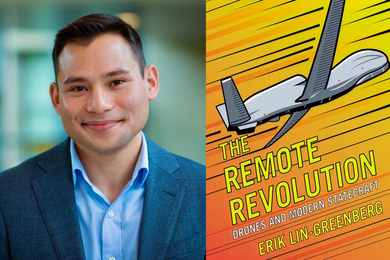Those who go down to the sea in ships can soon do so right out of the Fore River Shipyard in Quincy, thanks to past and present mentoring from MIT ocean engineering faculty members.
Sotiris Emmanuel (SB '79, SM), now a builder and businessman, hopes to succeed in reopening Fore River when others, including Bethlehem Steel, General Dynamics and shipping magnate Antonios Lelakis, have had to leave the once-famous facility to the birds.
"There's an impending boom in ship-building," said Professor Chryssostomos Chryssos-tomidis, head of the Department of Ocean Engineering and director of MIT Sea Grant.
"I always believed a great opportunity for this country was to go back to shipbuilding. There was an earlier boom, but the US was not in a position to capitalize on it. Now we can do so," Professor Chryssostomidis said.
Professor Chryssostomidis cited three reasons for his confidence in the future of Fore River once it is reopened and has its operations roboticized, as Mr. Emmanuel intends. These reasons are good technology, in light of recent and ongoing Sea Grant research; affordability of American labor; and Mr. Emmanuel himself.
"All we were missing was somebody with good management skills and a vision of making that shipyard work. Sotiris Emmanuel presented us with the missing element," Professor Chryssostomidis said.
Mr. Emmanuel's vision of owning the huge shipyard arose 20 years ago, when as a graduate student he got his first glimpse of Goliath, a 25-story crane, the ultimate shipbuilder's tool and Fore River's industrial centerpiece.
General Dynamics sold the shipyard in 1986 to the Massachusetts Water Resources Authority, which uses it for sludge and waste treatment. In September 1995, the MWRA agreed to sell the shipyard to Mr. Emmanuel's new company, Massachusetts Heavy Industries of Swamp-scott. Ernst G. Frankel, professor of ocean systems emeritus and Mr. Emmanuel's mentor at MIT, is the company's chairman. Mass. Heavy Industries already boasts five managers with MIT degrees.
"I plan to build a fully robotic shipyard in Quincy. Where else in the world could this be possible but near MIT?" Mr. Emmanuel said. He spoke from the audience of a news briefing held last week at the Tang Center to release the BankBoston report, MIT: The Impact of Innovation, at which many other MIT alumni/ae discussed how their Institute education and ties have helped their business careers (see story starting on page 1).
There have been plans to reopen the shipyard before, but none has offered Mr. Emmanuel's package of funding, political timing and technological expertise.
FEDERAL HELP
In 1993, President Clinton instructed the US Maritime Administration to make Fore River a pilot project because shipbuilding there was "essential to our defense capability and economic security." In 1996, the USMA guaranteed $54.5 million in bonds for the Quincy project. Mr. Emmanuel now has commitments of other federal, state, local and personal funds totaling $83.9 million.
Once Mr. Emmanuel's funding was guaranteed, Professor Chryssostomidis backed him up with the technical expertise of Sea Grant. "We had the research addressing key technological issues of shipbuilding," he said.
He noted that Mr. Emmanuel's success promised "advantages for us of opening a major industry in our backyard, of better focusing Sea Grant research and of offering opportunities in training and education."
Professor Chryssostomidis added that buying and reopening Fore River, despite its general state of disrepair, was still an economically good move. The yard has five dry docks, each of which cost about $100 million to build, he said. And, of course, Fore River has the towering Goliath, requiring only minor service to restore it to its former glory.
A version of this article appeared in MIT Tech Talk on March 12, 1997.





